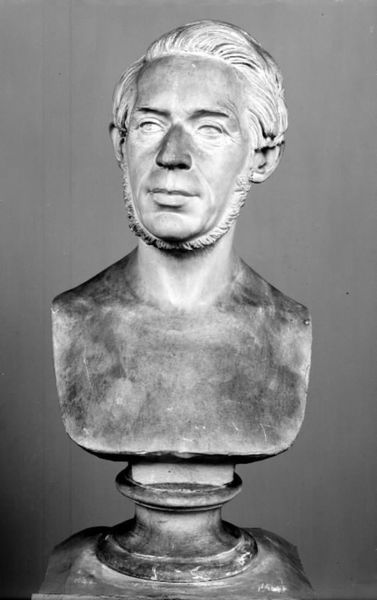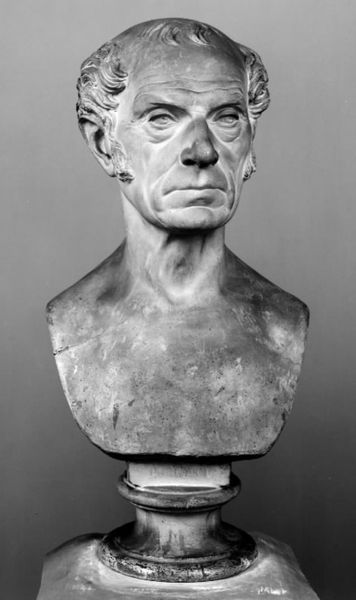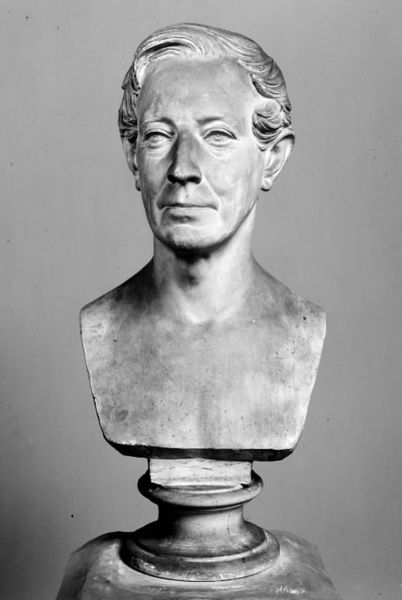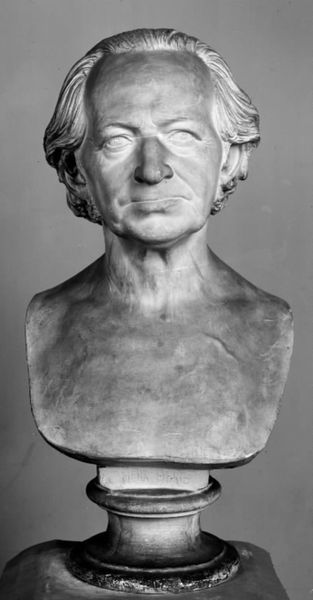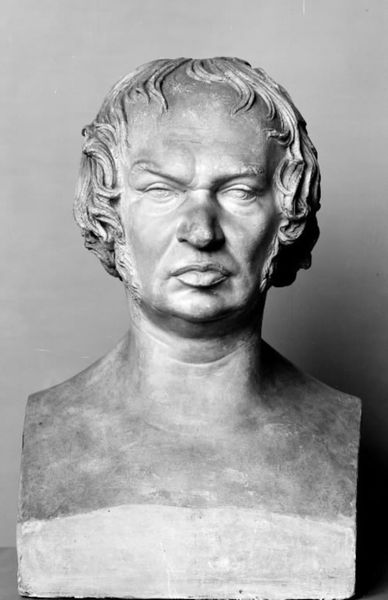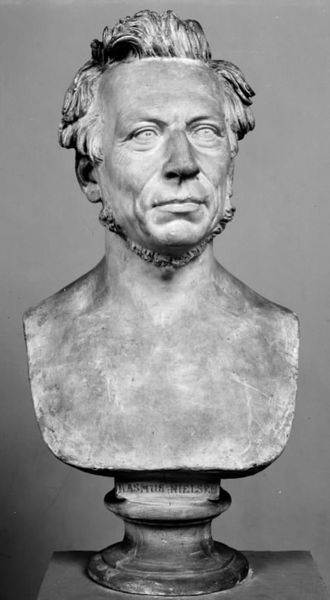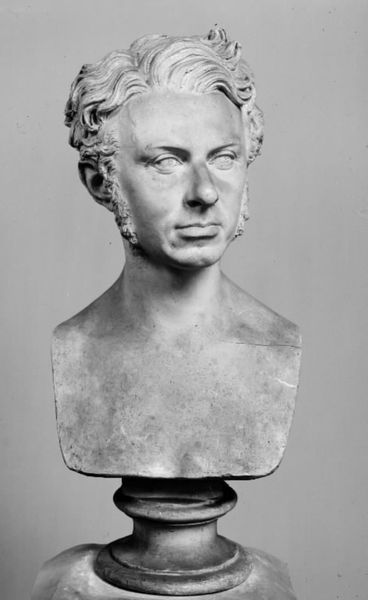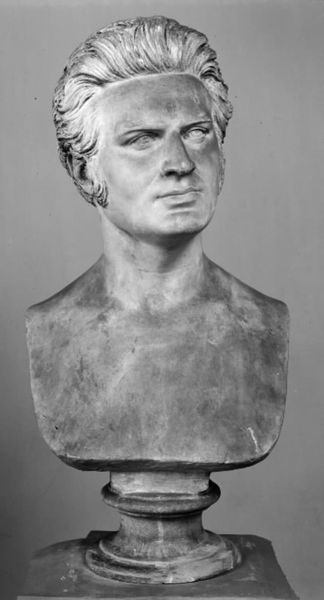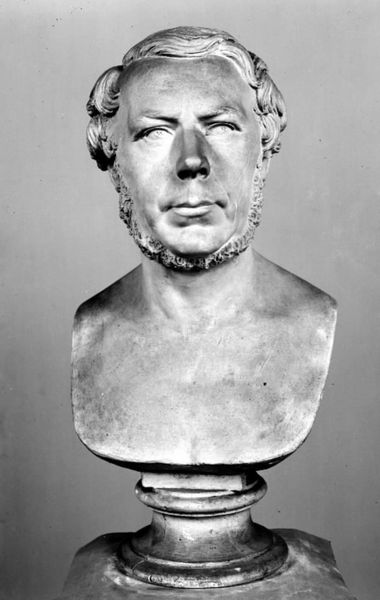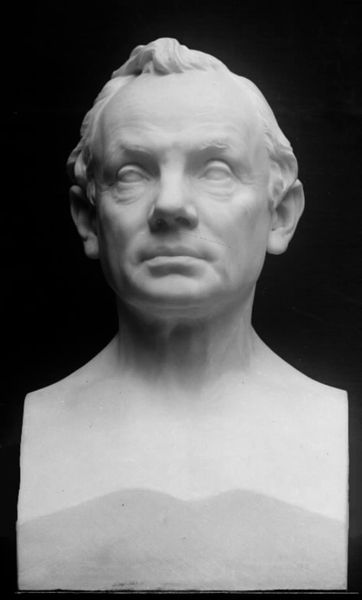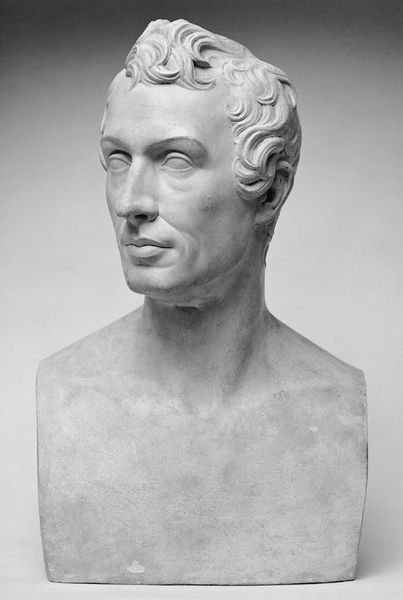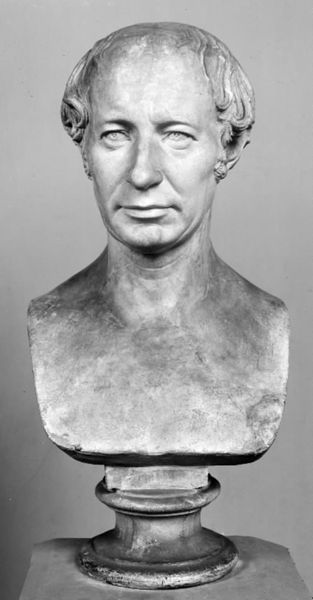
sculpture, marble
#
portrait
#
neoclacissism
#
portrait image
#
sculpture
#
sculpture
#
charcoal
#
marble
Dimensions: 52.7 cm (height) (Netto)
Editor: This is a marble bust created by H.W. Bissen in 1841, titled "Kunsthistorikeren N.L. H\u00f8yen." It's strikingly lifelike, almost unsettlingly so. I'm curious, what story does the material itself – the marble – tell us? Curator: It speaks volumes about the aspirations of the Danish bourgeoisie at the time. Marble, historically associated with aristocratic power and classical ideals, signals H\u00f8yen’s elevated status. Consider the quarrying of this marble, the labour involved in its extraction and transport – all reflecting economic structures and trade networks of the era. Who had access to marble, and what did it mean to commission such a piece? Editor: So, the choice of marble isn’t just aesthetic; it’s a statement about access and social standing. Was Bissen specifically chosen for his skills, and were there other sculptors at the time, and why not them? Curator: Precisely. Bissen was a key figure in promoting Neoclassicism, a style that served to legitimize particular values, and certain elites. Consider also the act of artistic production, of physically working the material. Did Bissen himself execute the piece entirely? Or were there assistants involved, their labour perhaps unacknowledged in the final artwork, essential for such demanding labor? These elements reflect a whole nexus of labor practices. Editor: That makes me think about how we value the 'artist's hand' and if it needs re-evaluating considering there were probably a lot of people working on it. What did the process of creating this bust look like back then? Curator: Well, photographic records from the 1840s show some artist studios. Let's consider the conditions that this sculptor, or rather his employees worked under in their workshop. What kinds of tools were available at the time, and how would the available lighting affect their level of expertise in using those instruments. Editor: So looking at the statue then makes you want to research all of this about the artistic process rather than just what it looks like? Curator: Absolutely. For me, the artwork opens into considering wider economic and labor questions. Editor: That’s a fascinating perspective, emphasizing how materials and production unveil layers of meaning I hadn’t considered. Thanks! Curator: My pleasure! Looking closer changes everything.
Comments
No comments
Be the first to comment and join the conversation on the ultimate creative platform.
